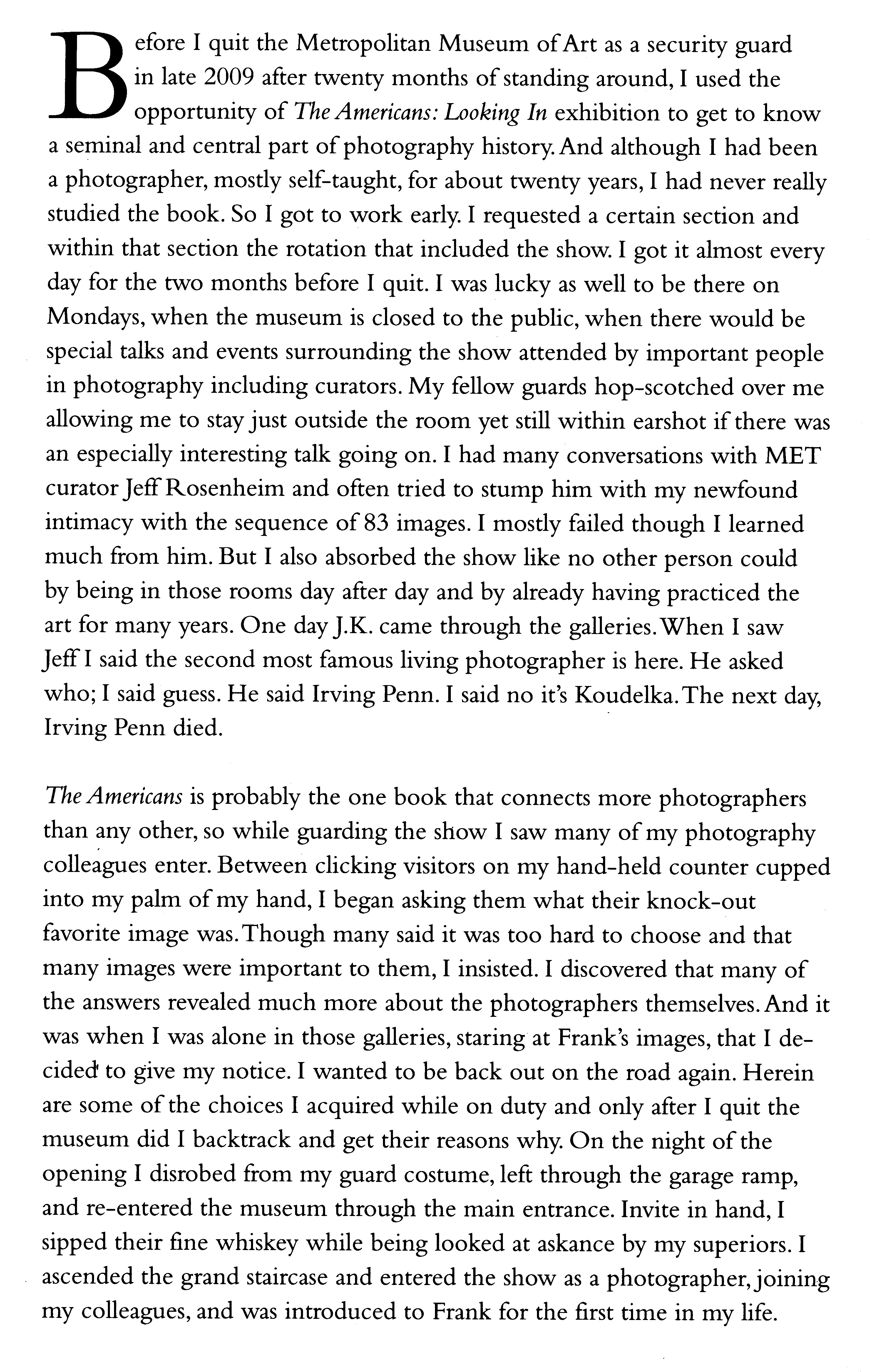
(hot off the press, early in the morning on Sunday, slightly augmented Sunday evening)
Something we haven't addressed that I'd like to raise, in the context of Frank's The Americans since we'll be thinking about that for part of today:
storytelling as the core purpose of one sort of photobook.We've seen a lot of examples of magnificent printing/reproduction/presentation of images in the photobooks Tim showed us, and the tip of the vast iceberg of what Daile knows about the history of the photobook as a genre, a medium, but there hasn't been time in this marvelous class to consider how sequencing and presentation and text supports (puts legs under) and animates the underlying purpose of the conveyance of message.
(and n.b. that some photobooks are centered upon displaying the art/craft of the photographer—Caponigro's are a good case in point—and aren't primarily "narrative"; others have a narrative purpose expressed by the sequencing of images and layout, and some of those are closely linked with the text that accompanies the images—Paul Strand and Nancy Newhall's Time in New England, Walker Evans' collaboration with James Agee in Let Us Now Praise Famous Men are two that I have been strongly influenced by).But we need more time to get to these questions of the complex and profound relationship of images to text to images, and that's where my Proposal comes in. I want to float and pre-sell (hell, even crowd-source) the idea of a version 2.0 of this class with Daile and whomever else she wants to rope in as a week-long working seminar in Visual Storytelling and the Photobook.
It's important to understand that the story isn't finished when the book goes to the printer. It continues in the mind of every reader, ramifies as new readers discover the book, and has a life as it ages. The Americans makes a wonderful example, sort of a limiting case of storytelling because its text is silent (just descriptive and locational information on the page facing each image), but the book fairly shouts down the halls of American photography, and in an important sense all of the ink spilled since its publication on discussing it is part of its text. It was one of the most disruptive and controversial photobooks ever, and it's still being chewed over for its significance and influence. See Looking In: Robert Frank's The Americans [2009] (Sarah Greenough, published by National Gallery of Art, produced by Steidl, the expanded edition including contact sheets and Frank's original sequencing of the images). And see also By the Glow of the Jukebox: The Americans List, which lists the favorite images of 276 viewers of the exhibit, with their explanatory comments. Here's the Introduction to that bit of ephemera:

The Americans is a text: it can be read as reportage, as interpretation, as critique, as exposé. But how is it a story? A narrative of a cross-country trip, a collection of vignettes to be read as Rorschach perspective provocations, or simply a set of images that Frank found in some way moving or explanatory? A lot there to think and talk about. And so it is with many photobooks: a lot to think and talk about. Maine Media's library is awash in (and my own bookshelves groan under the weight of) wonderful examples of story-telling photobooks. We need the time and space to explore that landscape, and to think and talk about just how word and image interact.
How have people designed (including conceptualization, typography, and layout) the relationship between text and image? Looking at a lot of carefully chosen examples really changes one's perspective on one's own efforts, and (as we've all experienced in this weekend workshop) seeing with the eyes and thoughts of sympathetic others can be really fruitful in developing our own projects.So the fact is: we are all storytellers, and have all chosen this "dynamic art form" as our medium of expression. Judging by what I heard and saw yesterday, we all have and can express eloquently the narrative threads of our extremely various works. I want more of this, I want to continue to discover perspectives and concerns and modes of expression that are new to me, as I did listening to everyone else around the table yesterday. I don't want it to just end when I zoom off to pick up summer guests this afternoon. Could Maine Media be the vehicle for its continuation?